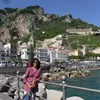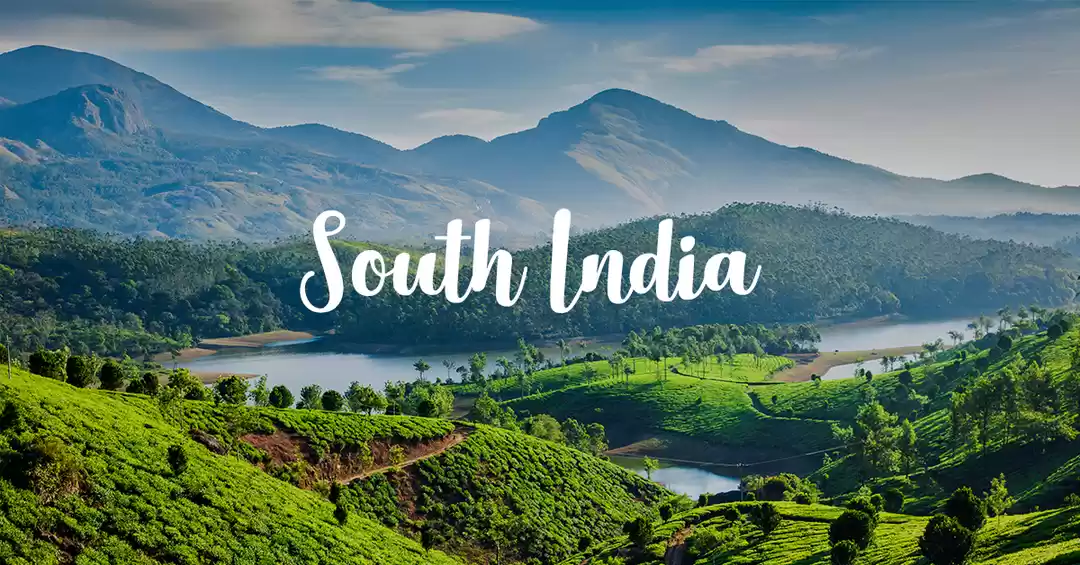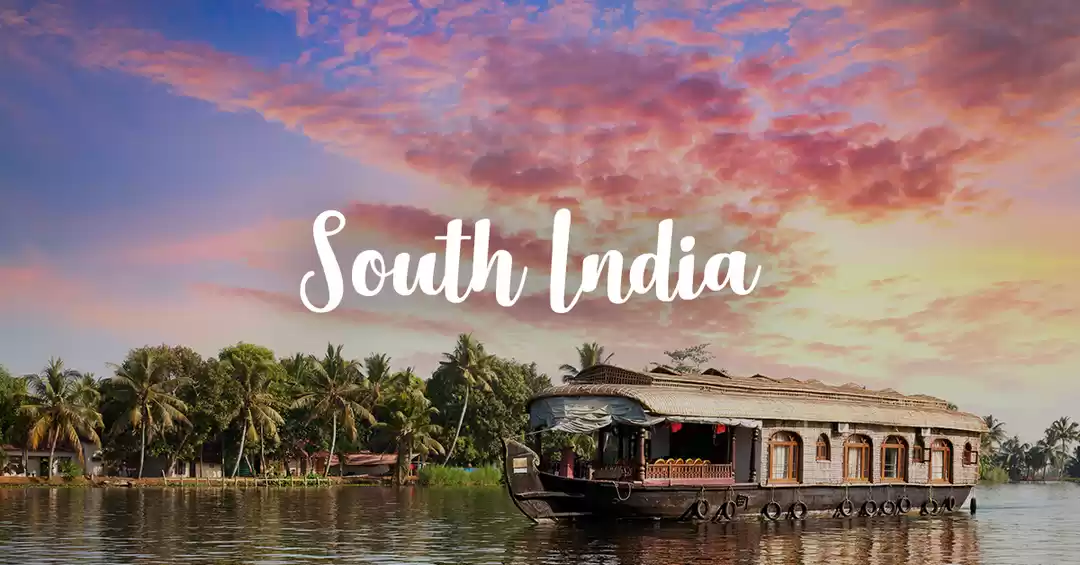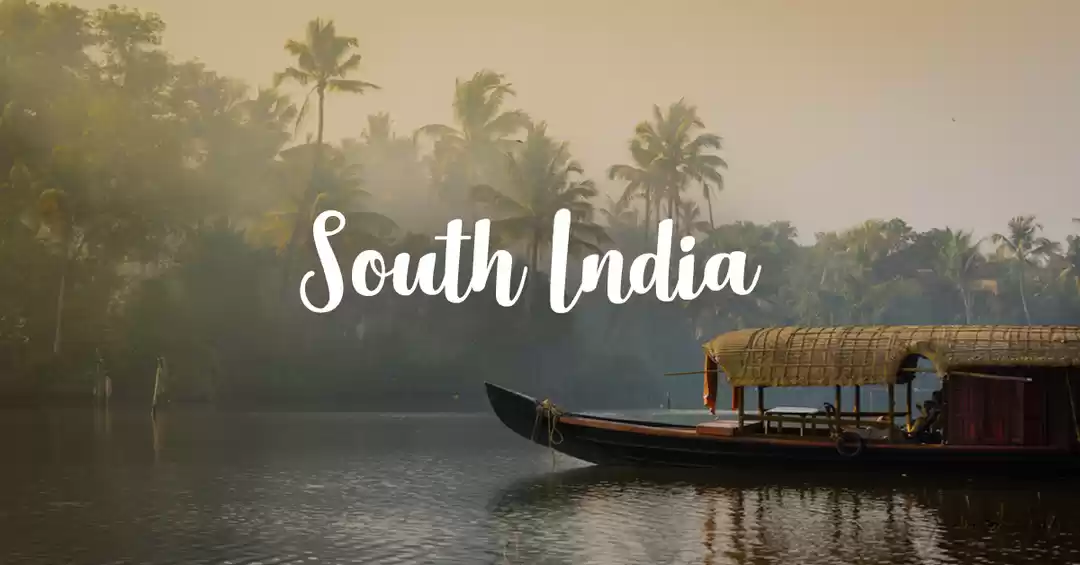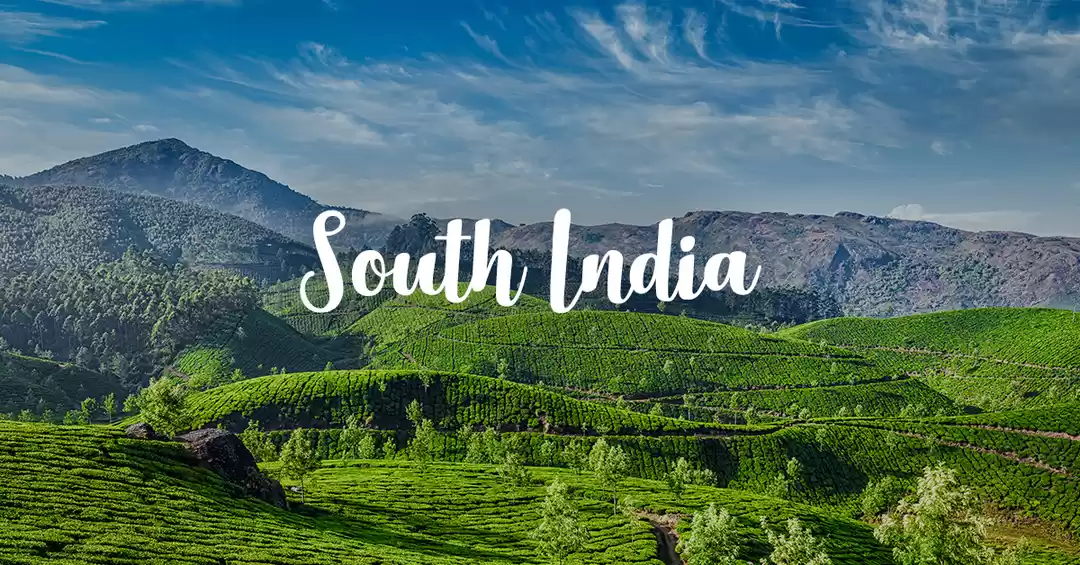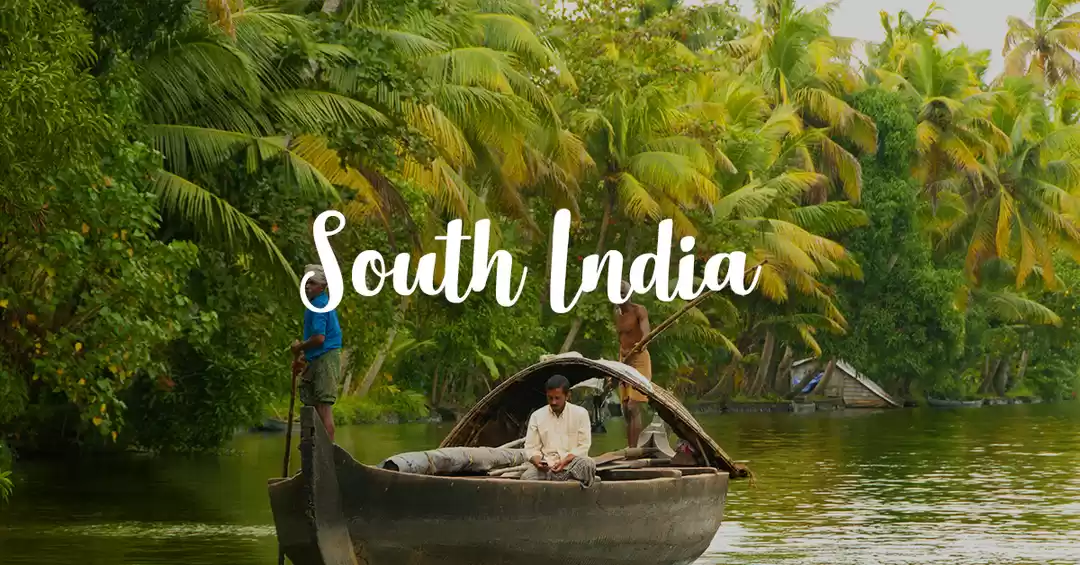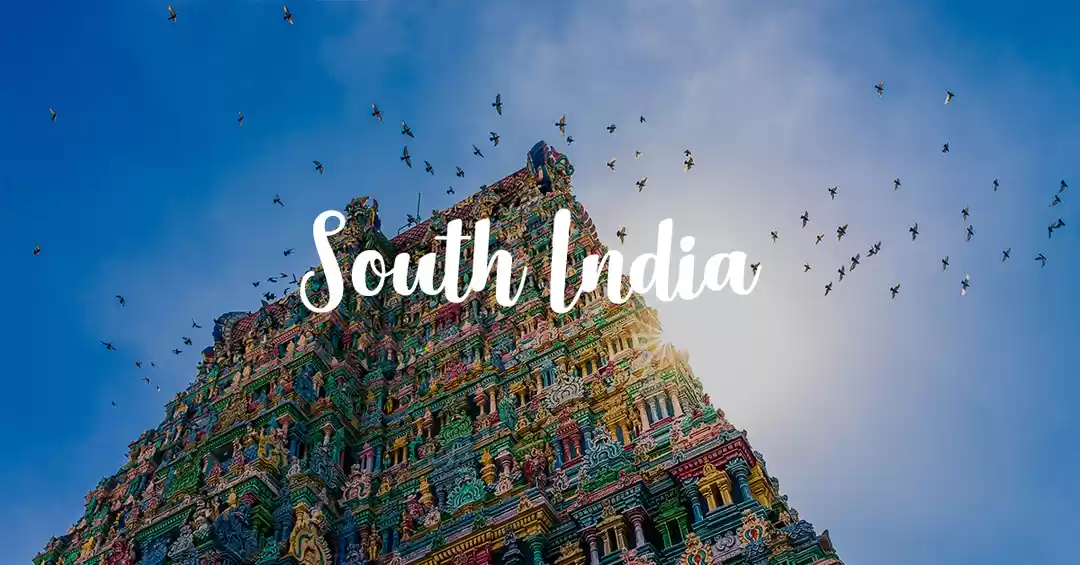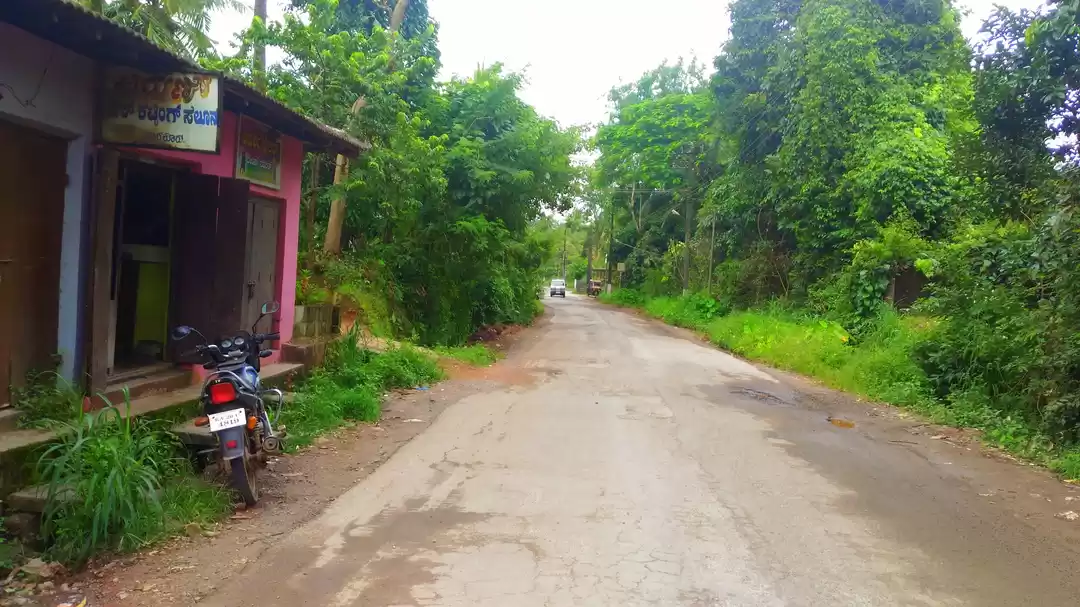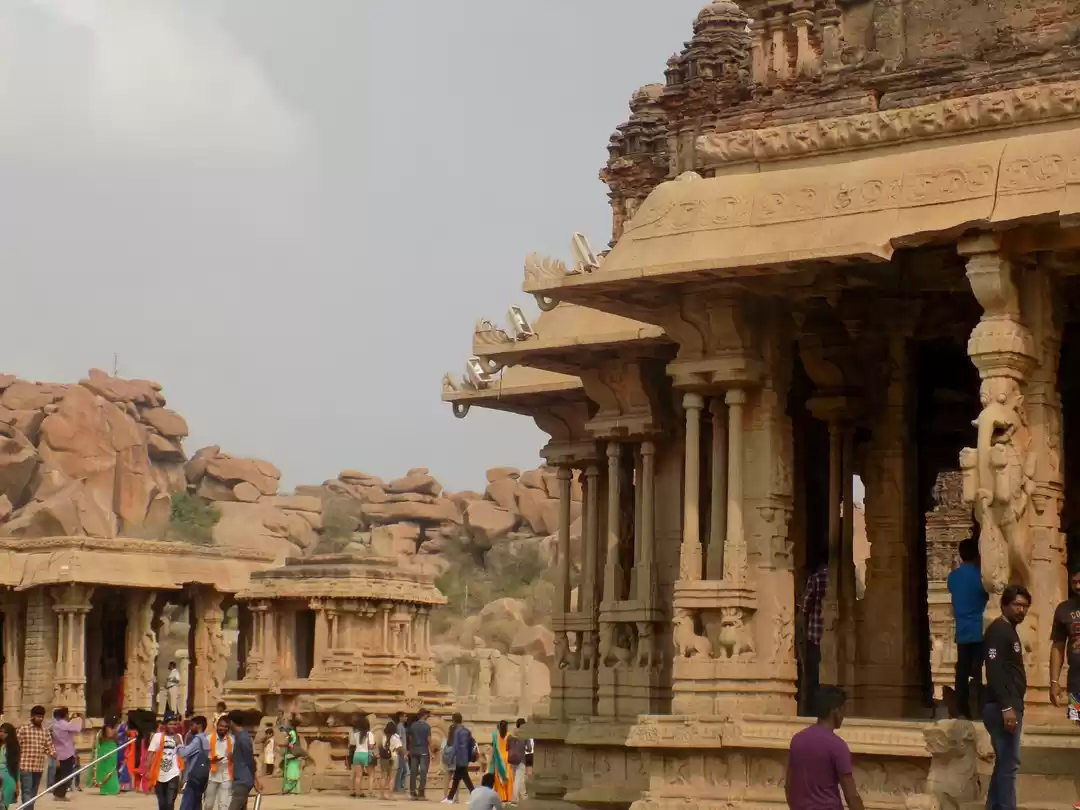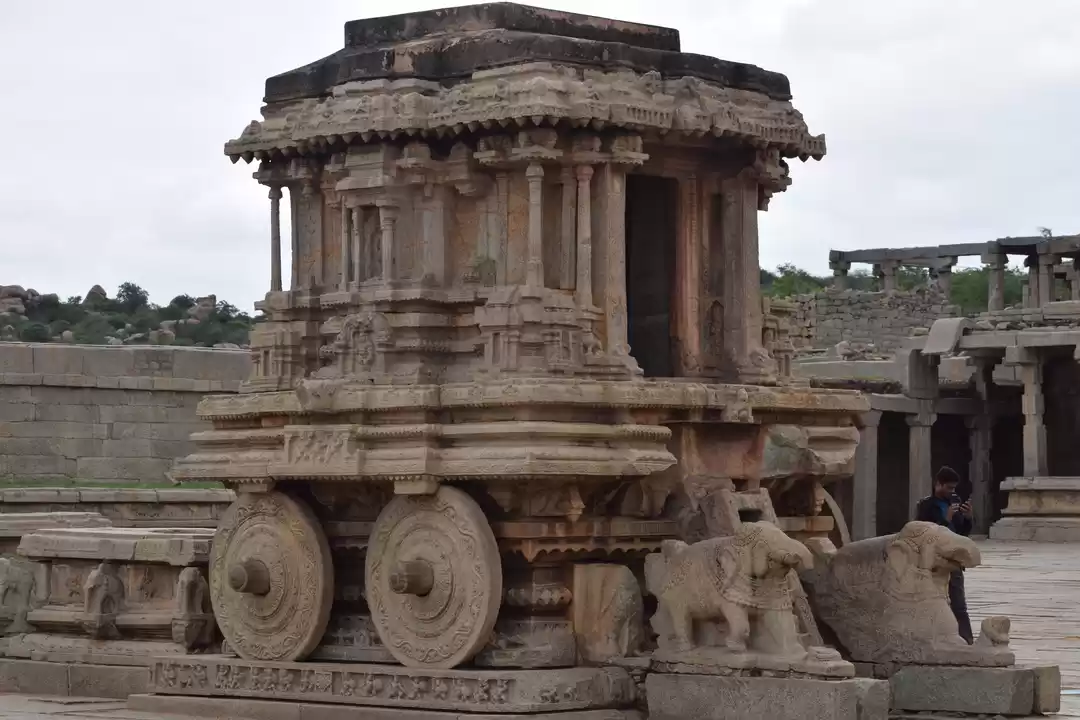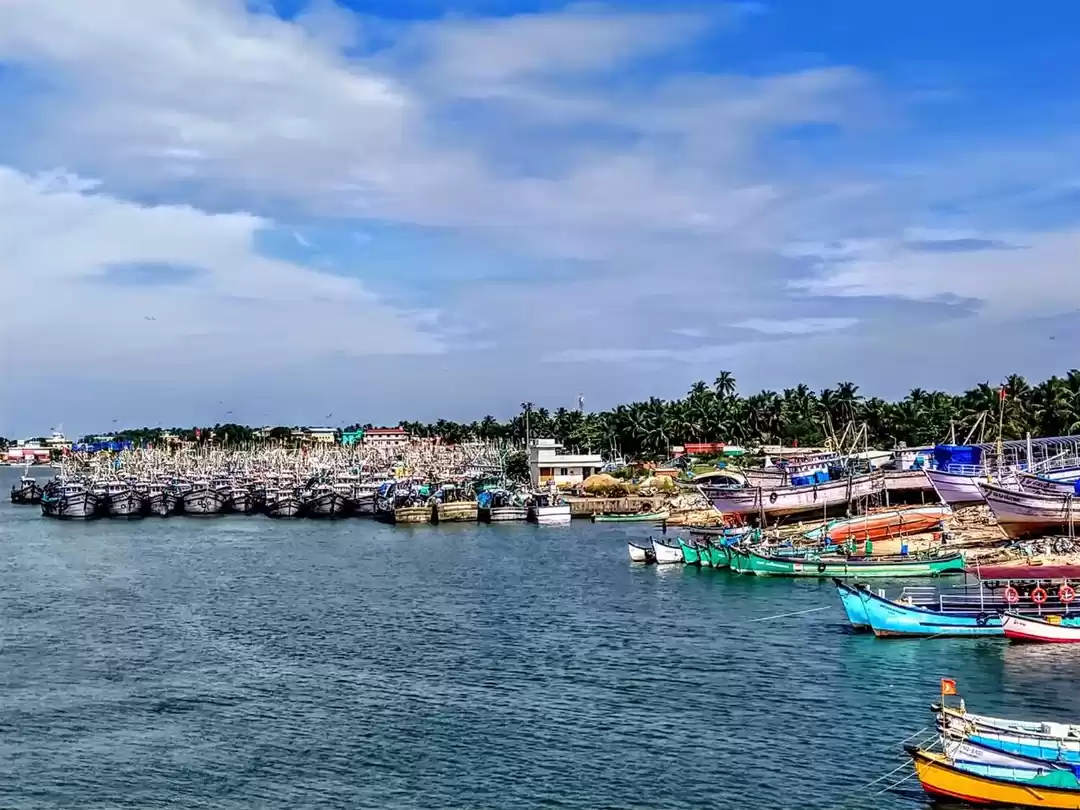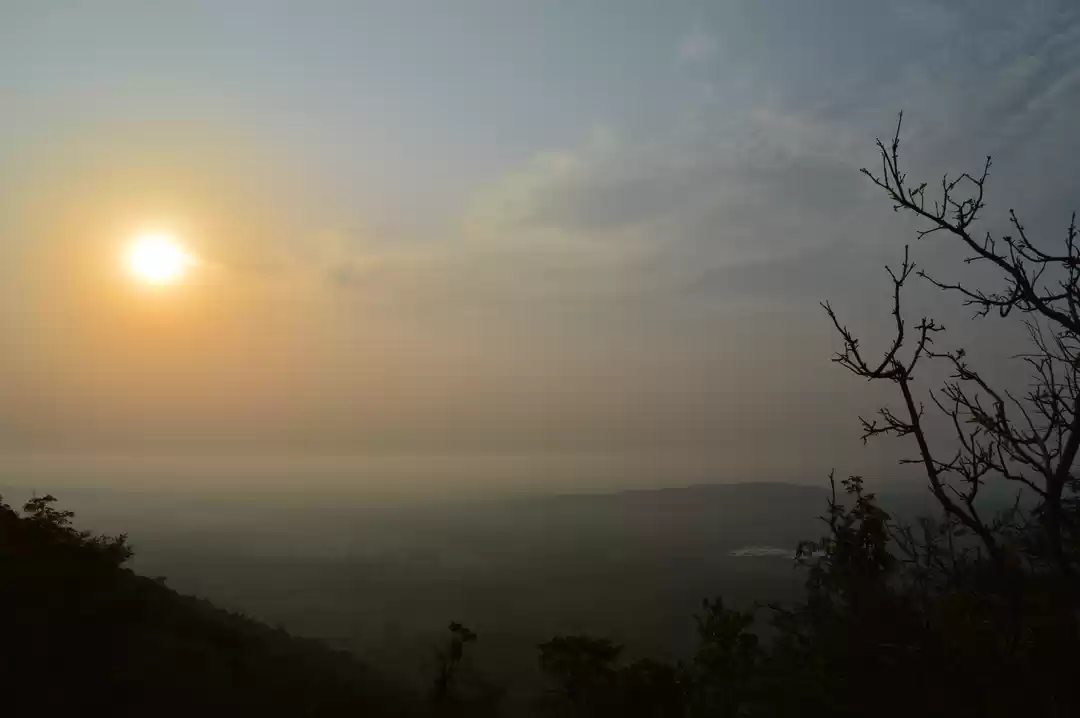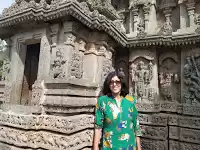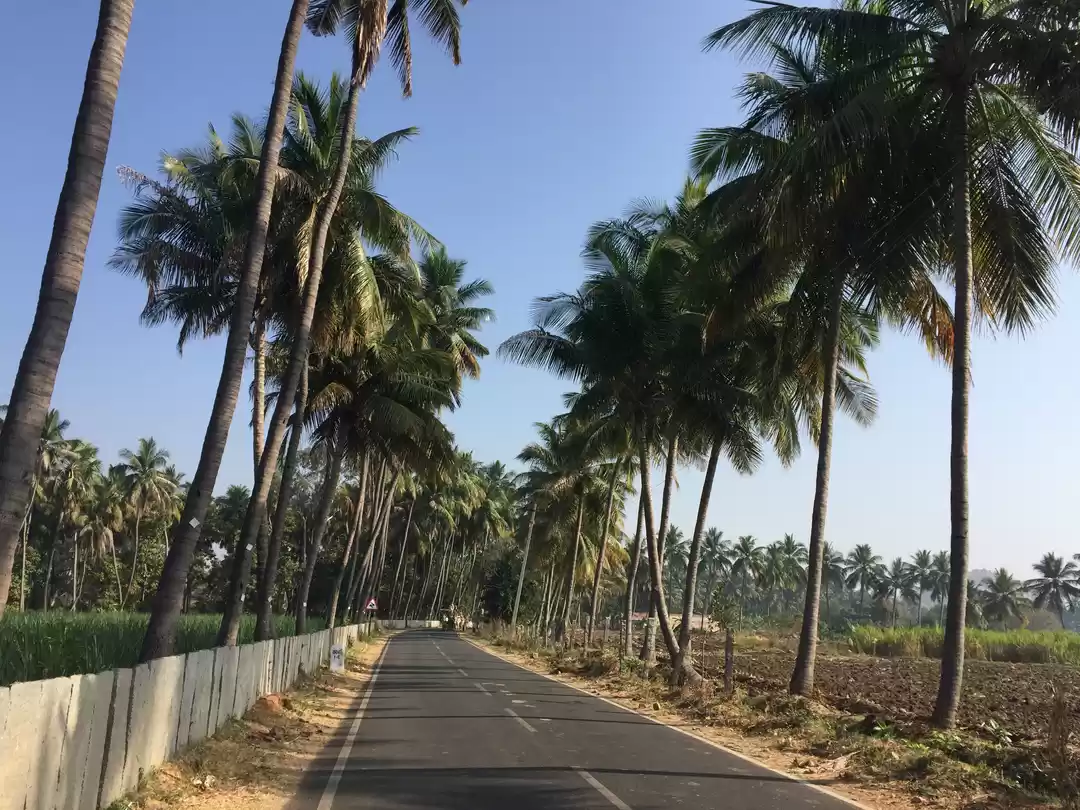Barkur (Udupi Dist, Karnataka) has been in our bucket-list since we heard from a friend about a unique ancient temple of Nandikeshwara with more than 150 wooden idols. When Viji and I planned to attend a function at my sister's, in Mangalore, we decided to visit this place. I tried to get little more information on this place and was amazed at what I discovered about this ancient port city Barkur and our forgotten rulers "The Alupa dynasty".
Alupas also known as Alva was an ancient and the longest ruling dynasty of South India. Their influence over coastal Karnataka lasted for about at least 1200 years. Though there are many inscriptional evidences from 650 CE about firstAlupa king Aluvarasa to the last Alupa King Kulasekharadeva Alupendradeva whose inscription dates to 1444 CE, it is believed their period started much earlier. An historian writes "The dynasty stretches far behind the period suggested by available details about the monarchs. It is quite possible that Alupas migrated to the coastal region of Mangalore as early as 300 B.C. and took control of the coastal land stretching from Southern Kasaragod till modern Udupi with Mangalore as the epicenter.Their rule extended unabated for almost 15 centuries starting from the beginning of the Christian era right up to the end of fifteenth century. They held sway over Tuluva Nadu, (South Canara) Haiva Nadu, (North Canara) Konkan and the Western Ghats as also the northern part of Kerala at various points of time. This dynasty and its kings are referred in the writings of Ptolemy- the Greek geographer (Olaikhaura) Halmidi Inscription of the fifth century, Guddnapura inscription of Kadamba Ravivarma and the Chalukya inscriptions of Mangaleesha and Pulikeshi-2 found respectively at Mahakuta and Aihole (610-642CE). It was known as Alvakeda and Udayavara (Udyavara) was its capital." The period of medieval Alupas is better documented and it extends from 950 -1400 CE. Their rule was confined to Tulu Nadu. Mangalapura (Mangalore), Udyavara and Barahakanyapura (Barkur) were their capitals.
Port city Barkur on the banks of Sita River was not only the capital of Alupas, it was sub-capital of Hoysala for some period and later it became a province of Vijayanagara Empire. Barkur was later ruled by Keladi Nayaks, Haider and Tipu of Mysore and the British. Given the vicinity to Arabian Sea, this town was a busy commercial centre almost from 2nd Century B.C. Evidences of Megalithic and mesolithic ages have been discovered here. It is believed that at one time King Vikramaditya ruled here. The town boasts of a little over 100 stone and several copper plate inscriptions. They belong to the Alupa, the Hoysala, the Vijayanagara and the Keladi periods.
This time-tested historic town has other interesting facts - Alupas built 10 keris/colonies here based on the residents' profession with at least a temple and a lake in each keri. In total they built 365 temples in and around Barkur. Story goes, king went to a different temple each day and on 365th day he would visit oldest temple "Panchalingeshwara" followed by car festival/town fair on that day. Today only 30 of these temples have survived. Temples were built in different stages and have influence of Chalukya, Pallava and Chola architecture. Idols are black granite, slate stone or light red stones. Barkur also has a Jain Basadhi ruins (Kathale Basadhi), Vijayanagara fort & Barkur fort and a church originally built by Portugese.
With such an inspiring and rich history, we thought of exploring Barkur and surroundings and not just Nandhikeshwara temple. Planned for a 2N/2D stay around here. Thankfully found a decent Hotel (Royal Inn) in Bramavara which is about 16 KM from Udupi and 5 KM from Barkur.
Off we went by an early morning Airavat bus from Bangalore to Udupi. Up to Sakaleshpur it was a comfortable ride but road leading to Ghat was different story all together. It was in bad state for few KM due to heavy monsoon this year and landslides. Our bus was delayed by an hour so, by the time we reached Udupi we were beat... At Udupi we took a local bus to Bramavar, a short ride of 30 Minutes. Luckily the Hotel was a very close walking distance from bus stop (still took an rickshaw/auto ????). After almost 10 hrs journey, we just wanted to rest.
Hotel and the room were better than expected. Restaurant in this hotel and its food are pretty good as well. What a relief!! Another thing to mention about this Hotel is, 1 day is 24 Hrs from your check-in time and the not the standard noon check-out. Great for people who travel by night bus/early check-in or late check-in like us. After dinner, we called local taxi provider recommended by hotel for our tour of Barkur the next day. Taxi owner gave a blanket quotation of Rs 2,000 assuming we are doing all the pilgrim places like Anneguddi, Guru Narasimha and Kolluru Mookambiki temples ???? when I told him we just want to go to Barkur, he was puzzled as normally tourists don't come to explore Barkur. He said may be 1,000 to 1500 Rs. We realized he was not knowledgeable and we did not want to ride with a driver unfamiliar with the place. Just said no thanks and decided on taking an rickshaw or bus like a local since it was only 5 KM. We knew in small towns in South Canara you get rickshaw but sometimes need their contact information.

Nov 8th: Had a great breakfast at the hotel - very tasty Menthe/fenugreek Jaggery Dhosae and coffee. Never had this type of Dhosae before...Yummy!!! We were all set to explore Barkur. Left by 9:00 AM and got an rickshaw for 175 Rs to the Barkur Panchalingeshwara temple from Bramavara. This is the oldest of all the temples here and said to be between 6 th to 7 th Century AD. It was earlier called Markendeshwara and the scripts in the temple premises refer to this place by this name. Legend says "The Saint/Rishi Markendayya prayed Lord Shiva here and decided to built temple for Shiva . He sent his disciples to Kashi to bring Shiva Lingam. But, since they got delayed, he got five lingam from Sita River and installed. When disciples returned, these lingams were installed in other temples here." This temple was renovated in 10 th century.
It is in typical South Canara-Kerala style architecture with copper roof and housing pancha lingam and other idols. There is an interesting idol of Karthikeya with Rooster. It is believed that the day this stone Rooster crows, pralaya starts/the beginning of the end ???? . There is a big kalyani/water tank in the premises.
There are temples on either side of this main temple - Batte Vinayaka, Hanuman and Bairava. Main Idols are from 8 th to 9 th Century. These are simple temples with no gopuram. There is a Mercury well nearby which is closed now and next to it are the ruins of Singala Devi temple.
There is a Mahalingeshwara temple behind. This dates back to 10th century. Idol is old but temple have been renovated recently. None of these temples are elaborate but, idols speak of its time.
By now it was 10:30 AM - It was impossible to walk even a KM in this hot sunny day.
Luckily, we did not have to walk all the way to the town bus stop to get a rickshaw, found one right where we were. Negotiating the price was something else. He kept asking how long we spend in each temple; we told him we are not here to perform pooja but to see the places. Finally, we agreed that he will take us to all the important places that we had in our list plus his additional suggestions for Rs. 200/- with one hour wait (distance was only within 5KM loop, it is the waiting time they calculate) and an additional hour would be Rs. 100/- extra. Seems like a knowledgeable local.

Our next stop was "Benne Kudhru/Butter Island". In ancient times Sita River used to be in full force near Barkur and the flow took two different paths and united again creating this island and since it appeared as butter, and hence the name. The fisherman community (Mogavera) is resident here. Earlier only access was by boat but now it is connected to the land by a bridge. It is a very scenic and peaceful place with Sita River flowing very calmly here. Few KM from here she would join Suvarna River and then into Arabian Sea. We were told during monsoon some parts of the Island get immersed in the river.

There is a Masthiamma (Mahalakshmi) temple here. Kula Masthi amma is the deity of fishermen community. This 8 th century temple has an inner sanctum of Mastiamma made from clay. Inside the main hall there are nice colorful wooden sculptures all around. These wooden idols are 5 Ft to 10Ft tall. They are mostly Dhaiva/Shiva Ganas (Like Veerabadra, Chikkamma, Bobbariya and etc.,). In South Canara area, not just the Gods are worshiped every household also worships one of the Dhaiva/Shiva Ganagalu. Temple has been renovated and additions built in recent years. We met the temple trustee who took special interest on us (????) and gave a tour with explanation.

Temple complex also has fisherman community/Mogaveera Guru and at the back of the temple was an interesting Nagabhana ( The snake worship rituals practiced in Tulu Nadu is quite unique and different from the other rituals. Snakes have their own snake shrines in a sacred grove known as Nagabana. The shrines have images of cobras carved of stones. Nobody is allowed to chop the tree near the Nagabana. It is also believed that snakes, specifically the cobras, are not to be harmed or killed by anyone and that Snakes are not just seen as deities, but as an animal species which should be respected, appeased and protected for multiple social, religious and ecological reasons.)It was interesting to see variety of trees which attracts snakes (like Sampige flower tree, Ashwatha tree and others). Trustee was so kind, he ensured the priest did pooja and gave us prasadha. He was pleased to see us come all the way from Bangalore. Unfortunately, we could not find any boat guy to take us for a round on Sita River.
I must say the roads here are in good condition, narrow lane with lovely green surrounding. Since it is post monsoon, shades of green was very soothing for eyes. Just when we thought it was so hot and sweaty; found a road side sugarcane juice stand!!! Sugarcane juice with lemon was delicious!
By now our auto guy got confirmed we are not here for religious reason and insisted we see an old Mahalakshmi temple in Bayer Keri. Temple was simple with no gopura and was closed. A lady there guided me to the priest house which was few steps away. The old priest was kind enough and happy to come and open the door for us. A distinctive simplistic temple with goddess Lakshmi in the center with Saraswathi and Parvathi on either side. Here too idols are made from clay and believed to be very old (date unknown). There is a Veerabadhra wooden idol outside the main sanctum.Ambiance, the look and feel of an ancient temple was evident.
Priest was telling us, once upon a time these temples thrived up until Tipu rule, during this time all valuables were stolen and most of the temples in Barkur destroyed. (same story everywhere in Karnataka) He said because these are not tourist attraction, many temple ruins were left to decay. Sad part is, even though these temples are under Mujaraye Dept/Govt control, Logic seems to be "not a pilgrim tourist destination equals no revenue which means Dept Auditor back pocket is empty, leading to zero funds from the Dept for renovation work. Unfortunately, saving our heritage is not part of their logic or equation, it is all about money.
From here our auto headed towards a very interesting and unexpected place. Thanks to this auto guy for being aware about his town and bringing us here.

This place is called "Simhasana Gudde". It is said that this is one of the oldest places in Barkur with historical significance. Some say King Vikramaditya of Ujjain was the first king here followed by Butalapandya.
It is said that Kandodhara a Bootharaja brought the famous Vikramaditya throne and buried it here and built a platform on it with Shiva that was worshiped by Vikramaditya and built a temple. Although there is no proper evidence to these, there is indeed a platform and lingam. Everyday Srichakra pooja is done here. There is a very old Shami/Banni tree. Although it is Shiva here, temple is called "Sri Banne Mahakali Temple" In front of the temple is Aramane Hanumantha and Beetala stamba. (I am sure one can go back to our childhood and remember Vikramaditya and Beetal stories).
There was an ancient sword, finger ring believed to be of Vikramaditya and the throne cover here inside the temple. Later, it was taken by thaluk/town authority for safe keeping and was brought out once a year during festival. Some years ago we were told they were stolen. (Thaluk office and safe keeping? Ya, right!!!????) Only throne cover is present but we could not see it. It is believed that this place was surrounded by fort and palace once upon a time. The priest and our Auto guy told us so many interesting stories about this place and Barkur Church built by Portugese which is right across from this place and how every attempt made to build bell tower collapsed due to Beetal - kind of a fine line between facts and fiction but the fact remains that they were unable to build bell tower for long time is true!
The stories shared with us can be a blog in itself. This is the beauty of traveling with/talking to unassuming locals. These stories make your journey that much more colorful.
We went to the town center to Kallu Mantapa ruins. There was an inscription stone. Absolutely no maintenance ???? . Next stop was "Kattale Basadi " - At the entrance of this complex is a 20 Ft monolithic pillar. There are two small stone Jain Basadi ruins from 12 th century and temples for Shiva and Vishnu.


This place is under Archaeological Dept and hence maintained. Wonder why only this is under Archeological Dept and not others - Oh! sorry!! forgot logic does not work...
We proceeded to Barkur fort. We expected a typical fort but there is nothing there to tell it is a fort. The grass had grown so wild and tall, it was a task to walk.
Auto driver told us we will find ruins if we walk some distance. Fortunately, we found a villager cutting the grass for his cows who bowled us over with his knowledge of place. He said since monsoon was so heavy and lack of maintenance has resulted in wild grass hiding the ruins. If he was not around, we would have left. He led us to a kalyani/water tank by making a path - this was in the most pathetic condition. Vijayanagara rulers traded horse from far and wide through ships via Arabian Sea. Horses from ships were made to rest here before proceeding further. There are numerous small stone pillars that were used to tie the horses. Further down, our new found guide had to cut some wild grass to show stunt fort wall (about 3 Ft tall) made from clay bricks. He was saying some historians did good work here and tried to restore this place. One Mr Bhat got his Ph.D from his study here started doing some good work here but after his sudden demise about 4 yrs ago, there is no progress on work. This place which once thrived was first destroyed by Tipu and valuables in the fort were stolen, later the people stole bricks of fort wall to build houses. we even heard stone carved pillars and inscription stones can be found in/around Barkur homes as their construction material. This villager said he is a christian and there was significant christian population after Portuguese came here. But Tipu's atrocity and murder of numerous Hindus and Christians alike in this area destroyed Barkur.

We saw three more old temples Somanatheshwara (not maintained), Someshwara anda 900 Yrs old Chola period Bairagi Ganapathy Temple made from stone with a slanted stone roof and etched stone pillars. The stone walls of this temple have beautiful sculptures. This temple is different from all the other temples here.
We were so tired with the heat especially after walking around in the fort area ... umbrella did not help much. Our one hr auto ride was now 2:30 hrs, there are few more temples but we covered most of them and more sites than what was on our list. We made a deal with the driver that we will pay 500 Rs total if he drops us back to our Hotel in Bramavar. What a gratifying 1/2 day tour!!!
Had a good lunch at our hotel and rested for a while. We thought of going to Sita River and enjoy a walk there. When checked at the hotel reception, they recommended Neelavar about 7 KM from here. They told us to take an Auto to Mahisha Mardhini Temple and it is bang on the banks of Sita River. Off we went around 4:30 PM.
In this 10 th Century temple, there are stone inscriptions here that establish the antiquity of the temple. The 4 armed statue of the Goddess Mahisha Mardhini is found with chakra in the left hand, slitting open the throat of Mahishasura with the sphere in the hand. Goddess is found stamping Mahishasura with the right leg. It is said that Alupas, Hoysala, Vijaya Nagara rulers held religious rituals in this place. As per the inscription, this temple was first renovated by Hakka-Bukka of Vijayanagara Empire. It is an extremely peaceful surrounding with Sita River flowing through. Priest told us to go to the east of the temple to Panchami Kanana: It is a huge Nagabana associated with the Lord Subrahmanya (Snake God) and that this place is next to the river with a bathing ghat. He even arranged temple auto to visit this place and from there back to Bramavar. Folks in these areas are so humble and warm.
It is a very nice Nagabhana. It was locked but we could see it from grilled door (gets locked around 4:00PM). There is couple of steps to go to the river/bathing Ghat. We sat on the steps with our feet in the cool Sita River and enjoyed the view. Right next to us was a huge Arali/Ashwatha tree and huge hutha/Ant hill.

This place was so calm and serene, we lost to time. Only two of us were there. When we asked our Auto driver, how come no one is here to enjoy the breeze and the view? He calmly said, usually no one comes here after 5:00PM because of snakes. Apparently, where we were sitting and this nagabhana gets lot of snakes moving around sunset. We both quickly got up ???? and asked why he did not inform us before... his response was Madam you had said 5 min when you came ????????. Happily we even went near Hutha for photos. Ignorance is bliss!
On our way back, asked our Auto driver if knows any good coconut oil Ghana/factory which makes good pure oil. He brought us to a place which was closed for the day, but they allowed us in and gave us 2 lt of oil (1/2 the price of what we pay in Bangalore). We got down at ' Mahalingeshwara Temple" in Bramavara.
This is an ancient 8 th-9 th century temple. From the inscription here, it is said first renovation happened around 11th Century. In Front of the temple is a big bali peta. Temple Complex is huge with copper roof. Since it was Karthika masa and late evening, temple was lit with oil lamps and looked wonderful! It was also Tulasi pooja. The main priest and his wife were busy with pooja. Nice to see women in these roles in this part of Karnataka. Go South Canara!! We sat at the temple kalyani/water tank for some time and then headed back to the hotel. Lovely day ended perfectly with a tasty south Indian dinner.
Nov 9th: Today the plan was to visit the Mekekattu Nadikeshwara temple that made us come to this part of Karnataka and later visit a nephew from my father's side who lives around here who we had lost touch with.
This morning we had yet again a great breakfast - Neer Dhosae & filter Coffee. We were advised to take bus to Shiriyara/Saibra katte as there are frequent buses in this route for Rs 17. It is about 14 KM from Bramavar. In these parts of the town, they stop the bus on request if you want to get down/up en-route. One of the passengers told us to get down with them as this stop is closer to temple (not a real stop I think). It was about a KM from here to the temple, luckily got an auto to the temple. This driver gave us his mobile number and told us to call back once we are done to drive us to Shiriyara.

temple is 1000+ years old. Uniqueness of this temple is huge collection of wooden colorful idols and many about 10 Ft tall. The history of this temple is unclear. There are many versions related to this place: " Some say Parashurama built original temple. Other evidence shows Alupas built this temple as a memorial of their war and hence so many warrior idols. Legend/Sthala purana about this place says - Saint Jabali Sathyakama informed the king this area is good to perform Ashwamedha yaga. Based on this, king tied his horse/Ashwa in one end of Shiriyara village (today called as Kudure katte) and tied a Meke/sheep for his yagna this place where the temple is, hence the name Mekekattu.
Couple of decades ago, Archaeology Dept had acknowledged the timeline of these idols and to preserve them transferred all the ancient idols from this temple to Delhi Museum where they are in display. What we have now in the temple is recreated idols. This temple has 172 wooden idols. The structure of the temple is simple but the idols/statues inside are something else. Inside the inner sanctum, main deity is Nandhikleshwara - "Shiva in form of Nandhi also called as Hari Nandhi" right side is Durga riding on five faced Nandhi. Left side are Akasha Nandhi, thrimuka Nandhi, Yaksha-Yakshani etc., a total of 27 idols. Outside this sanctum other than Dhwarapalaks there are Veerabadhra and Shiva Ganagalu. Outside this area are Hanumantha, Makutanatha and warriors.

A ladder above the main sanctum has many idols as well. There are evidence and inscription that Vijayanagar rulers were visiting this temple to worhip Shiva Ganas.
The priest informed us that the Gudigar/wood sculptor is local and has a shop in Kota. Hopefully we can meet him and see his other works. Awesome piece of work!!! I don't think there is such a temple elsewhere. Our nephew told an interesting story " When he was a kid he remembers being scared to walk near this temple as they heard lot of noise from inside. After dept removed and replaced with newer ones, noise was gone." It could be because of 1000 year wood idols and the breeze isn't it?
Our nephew had asked us to meet him at Siriyara "Gudettu Ganapathi Temple" . We called our auto driver and went to this temple. Auto driver said there is another good Kallu Ganapathi if we want to go first with some deviation. We opted out due to time constraint but later read it is a nice temple if you are interested to climb rocks. But hot afternoon is not the time.

Temple is a very interesting 300 Year old cave temple at the bottom of a stone/rock hill. There is a natural formation of Ganesha about 4ft ht. here - we can only see from a peep hole outside. The entrance and space inside the cave is very small and only priests are allowed inside. They do a unique offering here and it is called as Aaiyra koda seve in Kannada which mean 1000 pot offering. 1000 pot of water is splashed on Ganesha till he is immersed in water. Very interesting to see priests forming a line from temple well to the cave to pass the pot.
This water is later let out to a tank which is used for irrigation. There is a story behind this seva - In Hindu tradition one worships Ganesha first before anything new is started. When Shiva waged war with demon Tripurasura he does not worship Ganesha and loses battle the first day. He gets upset with Ganesha and aims Agneya Astra/weapon towards Ganesha. This throws Ganesha into Madhu/honey Sagara/lake. Since Ganesha loved honey, he drinks so much honey that his body heat raises which he could not tolerate. To cool down he went into this cave which had water. Aaiyra koda is done for the same season to cool him down. I was even more surprised to hear this seva is sold out for next 10 Years. (Don't know the cost). They serve lunch to whoever comes to temple everyday and is supposed to be a festive meal. My nephew is part of this seva priest team so we had to wait till this was completed. He and his wife were excited and so hospitable to see us (me for the first time).
Went to their house and walked around their paddy field which looked so good. Had a delicious lunch, local specialty like pathrodi and biscuut. These were made with last minute notice from us. On a side note - Best part was we came to know few things about my father which we were unaware of. My nephew was telling us details on how my father helped them in their time of need. Apart from this, one of the elderly priests at the temple said, apparently, he came for lunch to our house everyday while he studied Vedas at Vidhyapeet near our house. Viji said in general she remembers as a youngster, some of the students who was studying at Vidhyapeet came to our house for lunch. Hats-off to my parents for their kind helping nature. It is no wonder that Pejawar Vishwesha thritha Swamiji remembered my father and shows greatness of this swamiji remembering his helping hands during the initial days of this Sanskrit school.
We visited the Shiva temple close to their house where my nephew is the supervisor/parupathyadhara. This is a simple newer temple. It was around 3:00 PM by now and we took leave. Not far from their house is the bus route. We walked there and he waved and stopped a bus for us. They live such a simple and uncomplicated life.
Got back to the Hotel, rested for a while before leaving for Mangalore.
WOW!! What a memorable 2D/2N. Goose bump experience to be on this ancient land that thrived from 300 BC. If there is a place where the phrase "Every stone tells a story" applies, I think it is Barkur.
Another best part of our trip this time was, using local transport 100% which by the way is very efficient in South Canara. This gave us opportunity to chat with locals to get information and interesting stories in this lesser known town. Great to hear Barkurians have just come together and started Alupotsava, a three-day fest to promote tourism.
I must add, this place is definitely not for pilgrim crowd but for folks interested in history and archaeology.
It is extremely sad that we don't study about Alupa dynasty in our school. We study so much about Moguls and other invaders in such detail instead of our own great rulers. Wonder why? Maybe, like someone recently said "In India we are systematically taught to glorify invaders who came to destroy our heritage. I think nowhere in the world other than India, there are so many garden memorials and even street names after invaders."???? ????
My blog has more pictures - https://radha-travel-prayana.blogspot.com/2019/12/forgotten-history-and-temples.html

